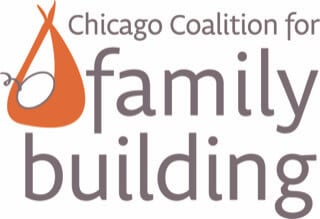The number of people smoking has decreased significantly over the past 30 years.  However, 30% of reproductive age women and 35% of reproductive age men in the United States still smoke cigarettes.
However, 30% of reproductive age women and 35% of reproductive age men in the United States still smoke cigarettes.
The available scientific data indicate that up to 13% of infertility may be attributable to cigarette smoking. The adverse effects of smoking on health are now well known. Most people, however, are NOT aware of the reproductive risks of smoking.
Effect of smoking on female reproductive health
- Conception Delay -- It takes longer for smokers to get pregnant! The percentage of women experiencing conception delay for over 12 months is 54% higher for smokers than in non-smokers. Increasing delay to conception correlates with increasing numbers of cigarettes smoked. Active smoking by either partner has adverse effects, and the impact of passive cigarette smoke exposure alone was only slightly smaller than for active smoking by either partner.
- Early menopause – Menopause occurs one to four years earlier in smoking women than in non-smokers. The effect is dose-dependent and suggests that smoking may increase the rate of ovarian follicular depletion (age dependent loss of eggs).
- Smoking has a negative impact on egg quality (ovarian reserve). Basal follicle stimulating hormone (FSH) levels (high basal FSH levels indicate diminished egg quality) are significantly higher in young smokers than non-smokers. In one study, basal FSH levels were 66% higher in active smokers than in nonsmokers.
- The ovarian response to gonadotropin stimulation and pregnancy rates are normal in smoking women with normal ovarian reserve test results.
- Smokers require nearly twice the number of IVF cycles to conceive as nonsmokers.
- Smokers need higher doses of fertility drugs (gonadotropins) for stimulation for in vitro fertilization cycles than non-smokers.
- Smoking effects the ovarian response to fertility drugs during IVF (lower peak estradiol levels, fewer eggs retrieved, higher numbers of canceled cycles, lower implantation rates, and more cycles with failed fertilization) compared to non-smokers.
- Tobacco smoke exposure may cause both chromosomal and DNA damage in egg and sperm. Smoking in pregnant women is associated with an increased risk of trisomy 21 babies (Down syndrome).
- Early pregnancy effects. Smoking is associated with an increase in spontaneous miscarriage in both natural and assisted conception cycles. Nicotine, carbon monoxide and cyanide from cigarettes directly affect the blood supply to the pregnancy, with resultant placental insufficiency and embryonic and fetal growth restriction and death.
- Smokers have a higher incidence of tubal pregnancy (350% increase of tubal pregnancy in women who smoke more than 20 cigarettes daily compared to non-smokers).
- Lower sperm counts are found in men whose mothers smoked compared to men whose mothers did not smoke. Paternal smoking does not seem to effect the sperm parameters of the child.
Effect of smoking on male reproductive health
- Smokers have sperm counts that are 22% lower than non-smokers. Smoking also effects sperm motility and morphology (shape). These effects are dose dependent i.e. the more you smoke, more is the chance of an abnormal semen analysis.
- Smoking may effect sperm function even in men with a normal semen analysis. This includes the ability of the sperm to fertilize an egg. It is therefore a good idea to quit smoking even if the semen analysis is normal.
How can I quit smoking?
Winston Churchill once joked that quitting smoking was the easiest thing to do in the world, because he himself had done it 91 times! It is often very difficult for smokers to quit on their own. Getting help from a doctor can increase the chances of successfully quitting smoking.
Various approaches have been tried, from hypnosis to nicotine patches, and the success rates vary depending on the individuals’ readiness to quit.
- Counseling, education and regular follow-up visits are recommended. The counseling may include discussion of the substantial reproductive risks associated with smoking. It is also helpful to discuss the fact that much of the harmful effects of smoking may be reversed with a year of stopping smoking.
- Providing educational materials and website addresses alone is helpful but unlikely to achieve cessation without other methods of intervention.
- Behavior modification, group counseling, feedback, advise, and nicotine weaning with patches and gum have proven effective (nicotine replacement therapy or NRT). The safety of NRT in pregnancy has not been established.
- Drugs that are used include aminoketone bupropion (Zyban). This drug is also used as an antidepressant under a different trade name (Wellbutrin).
- It is easy to do a blood or urine test to check if a patient has been smoking by measuring cotinine (a metabolite of nicotine) levels.

 However, 30% of reproductive age women and 35% of reproductive age men in the United States still smoke cigarettes.
However, 30% of reproductive age women and 35% of reproductive age men in the United States still smoke cigarettes.
